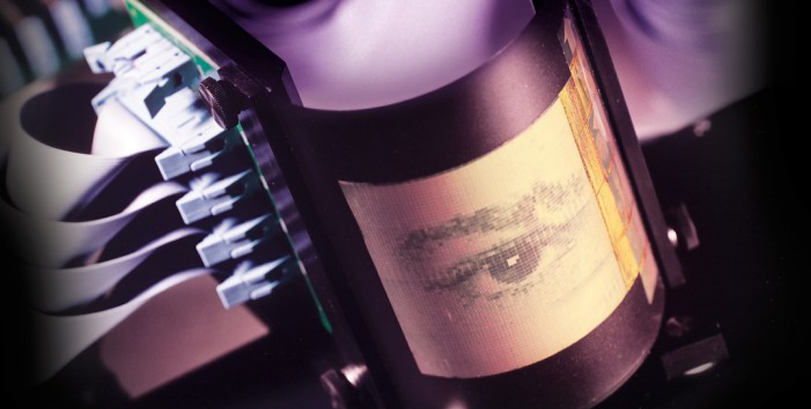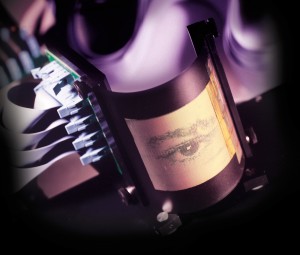Philips – The Behaviour of a Droplet of Polymer Solution in an Ink-jet Printer #SWI2003
Light-emitting polymer displays are a new, interesting flat display principle. The active material in the display is a very thin semiconducting polymer layer of order 100 nanometer. To obtain these thin layers a small concentration of the polymer is dissolved in a suitable solvent. Different colours can be obtained with different polymers. To make a full-colour display a red, green and blue polymer solution has to be applied in pixels of typically 66*200 micron. The method with which the polymer solutions are applied is by means of ink-jet printing. Individual droplets are printed in the pixels and by evaporating the solvent the final polymer layer is obtained.
The polymers that are used have a high molecular weight which causes the droplet formation to be quite different from an ordinary Newtonian liquid, i.e. a long filament during droplet formation can be formed. This can give rise to a decrease in the placement accuracy of the droplets on the substrate. To predict the behaviour of a droplet in an ink-jet printer the material parameters of the liquid are very important. For a Newtonian liquid, the shear viscosity is a sufficient parameter. For the liquids with small concentrations of a high molecular polymer, this is quite different. The question is: can the problem be solved vice versa, in other words, can we obtain material parameters from the droplet formation process out of an ink-jet nozzle? To begin with, it is important to have a mathematical model of the droplet formation.
The problem formulation in more detail.
The viscosity of ink is an important parameter for the droplet formation in an ink-jet head. Standard in the ink-jet printing world is to measure the shear viscosity of the liquid. Most common inks are Newtonian liquids and therefore the measurements of the shear viscosity is a suitable characterization technique. The inks that Philips wants to use are solutions of a high molecular weight polymer in small concentrations in a suitable solvent. The drop formation of these solutions is considerably different from a pure Newtonian liquid. There is more energy needed to eject the droplet and also the droplets are formed with a filament. When this filament is too long it can break up in satellite droplets and also the directional accuracy can decrease.
When these solutions are measured in a shear rheometer the viscosity is constant as a function of the shear rate, and in the proper regime for ink-jet printing. The droplet formation, however, shows this filament formation. The suggestion is that the filament formation during the ink-jet printing is caused by the elongational viscosity. It is well known that a small concentration of a high molecular weight polymer in a solvent can have a substantially larger elongational viscosity than a pure Newtonian liquid.
An extreme example of filament formation.
The problem is that the shear viscosity cannot be used to characterize the `inks’. The elongational viscosity is not easy to measure, in contrast to the shear viscosity. It is also important to measure the elongational viscosity at the proper rate of deformation of the liquid. At this moment researchers at Philips use the length of the tail that is formed during the droplet formation as a way to characterize our liquids. With an empirical relation, they can transform this into a maximum shear viscosity at a typical concentration. At this moment this is a suitable way to characterize the liquids.
Philips is interested if the droplet formation could be used as a simple way to measure the elongational viscosity of the inks and compare it with another possible measurement technique, which is not available at their laboratory.
Questions
- Can we obtain information on the velocity and the deformation from the droplet and filament formation?
- Can we obtain information on the elongational viscosity from the drop formation? At Philips, they already have a very simple model for this.
- Verify the model with experiments.
- Do we need a special visco-elastic model for the calculations?



